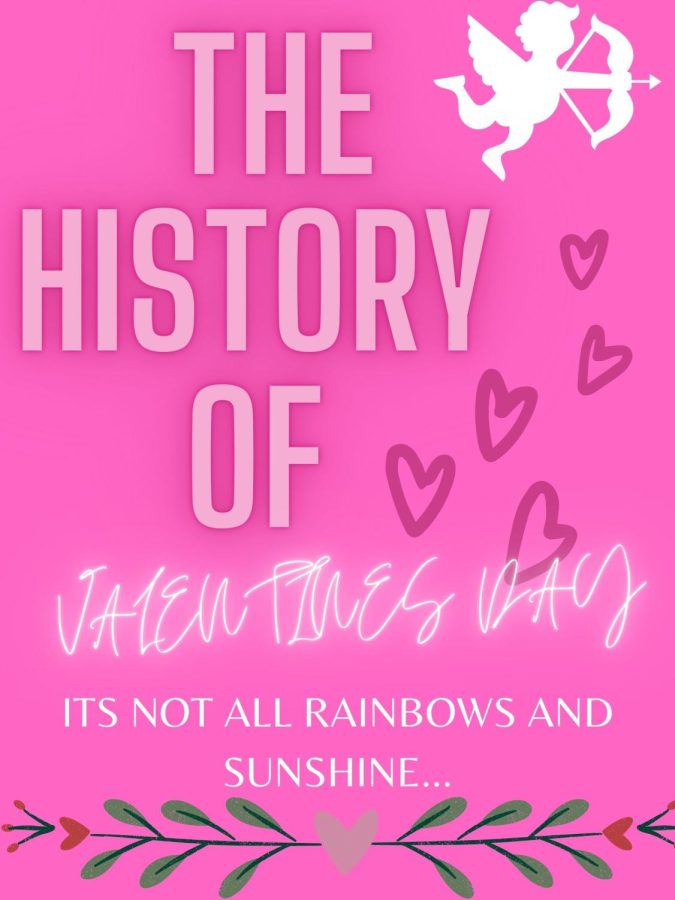The History of Valentine’s Day
February 4, 2022
Valentine’s Day is more than just getting chocolate in a heart box from your friends. Valentine’s Day is special and has a history. On February 14, candy, flowers, and presents are shared between loved ones across the United States and around the world on Valentine’s Day, all in the name of St. Valentine. From the ancient Roman springtime festival of Lupercalia to Victorian England’s card-giving practices, Valentine’s Day has a long history. The origins of Valentine’s Day, as well as the legend surrounding its patron saint, are buried in mystery. We know that February has always been associated with romanticism and that St. Valentine’s Day, as we know it now, incorporates Christian and ancient Roman traditions. But who was Saint Valentine, and how did he come to be linked to this?
In the third century, Saint Valentine is said to have been a Roman priest who performed secret weddings against the authorities’ wishes. He healed his captor’s blind daughter while imprisoned in a noble’s home, inspiring the entire household to convert to Christianity. He sent the girl a card marked “Your Valentine” before being tortured and killed on February 14. According to some legends, another saint named Valentine lived around the same time period, the Bishop of Terni, who is likewise attributed with secret weddings and execution on February 14th by beheading. Unfortunately for those expecting a clean, romantic narrative to the occasion, experts who have researched its beginnings believe there is little evidence to support these claims. In fact, thanks to the English poet Geoffrey Chaucer, Valentine’s Day only became associated with love in the late Middle Ages.
Cupid comes up a lot during Valentine’s Day, and is commonly depicted as a naked cherub shooting love arrows at unsuspecting lovers. Cupid, the Roman god of love, has his origins in Greek mythology as Eros, the Greek god of love. Some claim he is the son of Nyx and Erebus, others say he is the son of Aphrodite and Ares, whereas others say he is the son of Iris and Zephyrus, or even Aphrodite and Zeus (who would have been both his father and grandfather). Eros was a magnificent immortal who, according to the Greek Archaic poets, played with the emotions of Gods and men, employing golden arrows to excite love and leaden ones to sow hate. It wasn’t until the Hellenistic period that he was portrayed as a hero.
Valentine’s Day is celebrated in Canada, Mexico, the United Kingdom, France, and Australia, in addition to the United States. Around the 17th century, Valentine’s Day became popular in the United Kingdom.
Friends and lovers of all social groups exchanged tiny mementos of affection or handwritten notes by the middle of the 18th century, and thanks to advances in printing technology, printed cards began to supplant written letters by 1900. In a time when direct expressing of one’s feelings was discouraged, ready-made cards were a convenient way for people to express their views. A rise in the popularity of mailing Valentine’s Day messages was also aided by lower postage charges. In the early 1700s, Americans began sharing hand-made valentines. Esther A. Howland started selling the first mass-produced valentines in America in the 1840s. Howland, nicknamed the “Mother of the Valentine,” created complex designs using actual lace, ribbons, and bright “scrap” images. The Greeting Card Association estimates that 145 million Valentine’s Day cards are sent each year, making it the second most popular card-sending event of the year (more cards are sent at Christmas).







